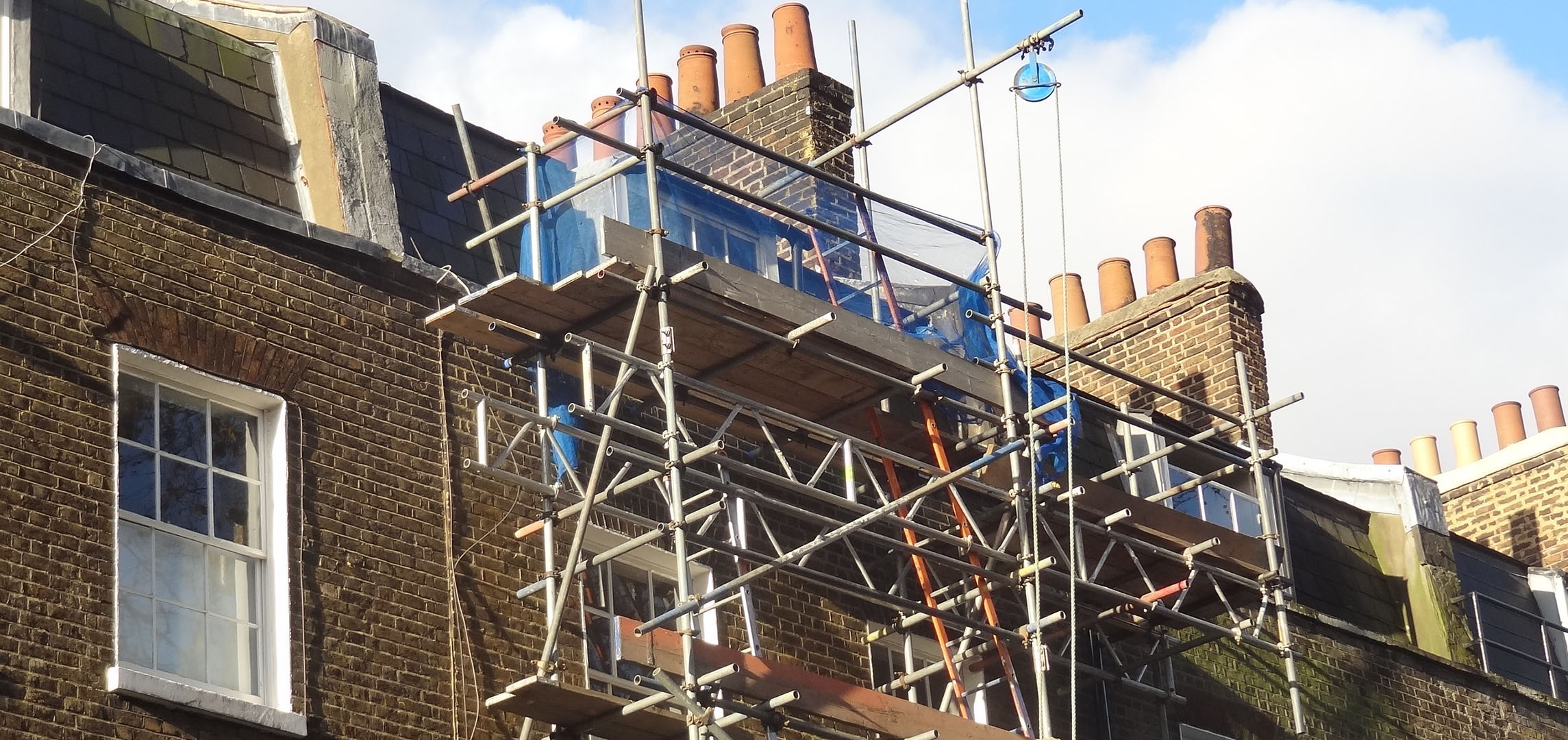Keeping Safe When Working On an Older Home
Keeping safe during maintenance checks or repair work is mostly a matter of common sense.
If professionals are carrying out maintenance, repairs, or changes for you, they have to work within statutory health and safety regulations. If you are doing work yourself, there are a number of things to bear in mind.
Safe access
As well as not taking any unnecessary risks yourself, make sure you’re not endangering passers-by or blocking public access such as a pavement.
Ladders
You may well need to use a ladder. They are handy for clearing debris from gutters or doing a quick maintenance check. Only use them to gain access, not as a working platform.
Make sure the ladder is securely clipped or tied, or that someone else is holding it steady for you. If you need regular ladder access to a specific place, consider fixing an eyebolt to secure the ladder to each time you need to.
Scaffolding
If you need to hire scaffolding there are two main types:
- ‘Independent tied’ scaffolds are erected close to the building and then ‘tied’ to it for horizontal stability, so are fixed in place. For significant buildings the methods of tying to the building may be limited to prevent irreversible damage to the building.
- ‘Freestanding’ scaffolding is not tied to the building and needs to be designed to provide the specific access required. This is generally more expensive. Mobile scaffold towers are freestanding scaffolds. They are cheap and quick to erect, but they are less easy to use at a significant height, in confined spaces or on steeply sloping ground.
Mobile elevated platforms
Hydraulic platforms are less complicated than scaffolding. They provide an almost instant means of access and can then be removed as quickly.
- Scissor lifts are difficult to use in confined spaces or on steep or rough ground.
- 'Cherry pickers', with the working platform on an articulated telescopic boom, have a higher and longer reach. They are useful for hard-to-access areas set further back from the front of your house.
If using one above a basement or on a terrace or paving, take care that the structure or surface supporting the access platform can carry its weight.
Hazardous materials
Working with hazardous materials such as asbestos is covered by health and safety legislation, and before their removal, you must first carry out a risk assessment. Any specialist contractor you employ must take all appropriate precautions to protect not only those working with the material, but also everyone else in the house and the general public.
You should also be aware of the dangers of dealing with old layers of paint or the hazard of clearing up bird droppings.
Asbestos
If you think there may be materials containing asbestos within your home you need to contact a specialist. They will first carry out a survey to find out if there is asbestos-containing material, and if so how much and where it is. This will determine what actions you need to take.
The Health and Safety Executive website provides useful advice on:
Lead-based paint
Until the 1960s, paints containing lead were common so it is wise to assume that some proportion of lead will be present in pre-1960s paintwork. The use of lead paints is still permitted in some listed buildings. For more advice, see our Sourcing Lead Paint web page
If you suspect or know that there are white lead paints in your home it is best to cover them up under another coating or get them removed safely.
For more advice see:
Birds
Dust from infected droppings or feathers can cause lung infections if inhaled but you are most likely to only be dealing with small quantities.
Wet the bird droppings first to eliminate dust and then put them in sealed plastic bags. You can dispose of small quantities in domestic dustbins. For larger quantities use a registered waste carrier.
Bats
There is no evidence that bat droppings or urine have caused disease or harm in the UK but if cleaning up, do wear gloves and a dust mask, and wash your hands afterwards. The Bat Conservation Trust's Frequently Asked Questions provides more information.





